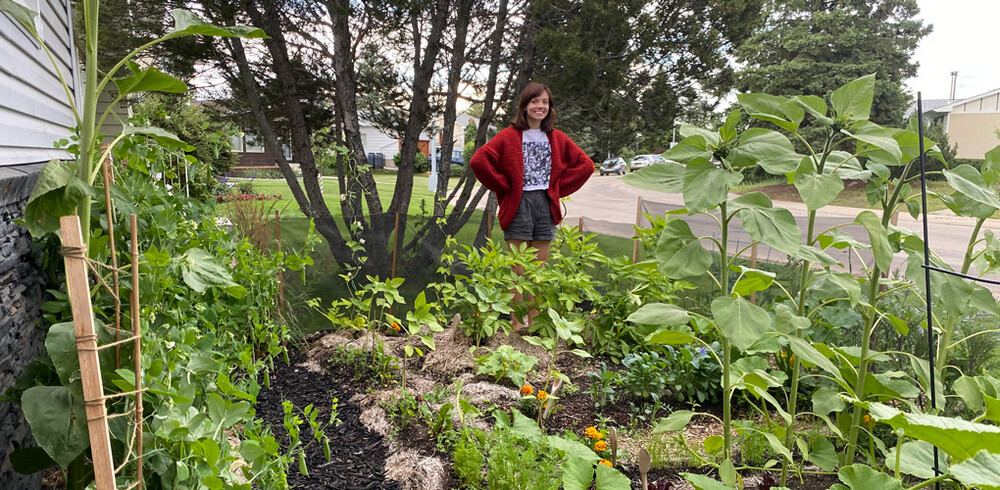These Are the People in Your Neighbourhood

The City of Edmonton and EPCOR both promote low-impact development (LID) on a variety of property types, including private residential lots. LID best management practices leverage nature and natural processes for the sustainable management of water quantity and quality and support the City’s “The Way We Green” initiative. One recommended intervention is the installation of rain gardens. Rain gardens help to reduce the risk of flooding and can support a variety of plants and add visual appeal to a yard.
These, and other forms of LID and nature-based solutions, are described in detail in Land Stewardship Centre’s Green Communities Guide and they are being put into action through not only municipal and community-based initiatives but also at a personal level. Here’s the story of one individual’s efforts to integrate a nature-based approach on her property in south Edmonton.
Green Communities Guide Coordinator, Milena McWatt, met recently with a resident of the Greenfield community, whose stewardship work is turning heads. Having lived in Victoria, BC gave Nicola Gunter an introduction to permaculture and a different approach to gardening. Over the past 2.5 years, she has transformed her front yard in Greenfield from Kentucky bluegrass to have more biodiversity, habitat and food production. She also installed a small rain garden, food production planters, bee houses and a wide variety of native species intended to support native pollinators and the soil. She sought out resources online and in books to support her learning about sustainable gardening, low-impact development and Indigenous knowledge on land management in the prairie provinces.
Working to transform her property in this way is important to Nicola because she takes a holistic perspective that it is important to provide native habitat and work with the landscape rather than trying to manipulate and control it. Her step-family is Cree and Nicola would like to ultimately return her yard to a pre-settlement state, be in relationship with the land and plants, and share her yard with people who do not have land access. She does the latter through the Goodworm program and has received a certification of wildlife-friendly habitat from the Canadian Wildlife Federation.
When asked what advice she would give others interested in moving away from a grass lawn to include naturalized spaces and LID, Nicola says it’s important to reimagine and then reinvent what we view as a ‘beautiful’ front yard. She also recommends spending plenty of time paying attention to your space and how the sun and the rain show up on the landscape. Starting small and using what you have available or can get from neighbours or by thrifting can keep costs and the workload manageable.
Interested in incorporating a rain garden? A step-by-step guide is available from EPCOR.
Learn more about the City of Edmonton’s approach to environment and climate resilience.

